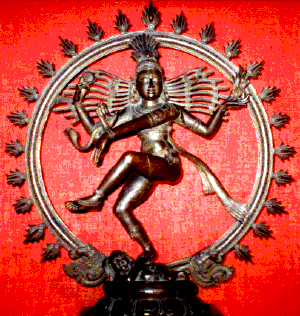The Gupta Realms
 The Indian civilization is thousands of centuries old. What do we in the west know about this ancient civilization? What has Indian culture brought to our world history and how can we better our societies by incorporating Hindi customs to our everyday living?
The Indian civilization is thousands of centuries old. What do we in the west know about this ancient civilization? What has Indian culture brought to our world history and how can we better our societies by incorporating Hindi customs to our everyday living? The ancient Dravidians, a pastoral and semi-literate people, inhabited the Indus Valley as far back as 2600 B.C. It was not until the Aryan peoples (semi-nomadic warriors from the central Asian steppes) invaded northern India, pushing the dark-skinned Dravidians southward past the Deccan plateau. The Aryans were a Vedic peoples, ascribing hymns and sacrifices to their gods and incorporating a caste-system based on varna or skin color. The highest caste were the priests of this group, known as the Brahmans, who were the lightest skin shade and helped shape Hindu culture to what it is today.
The Brahmans were deeply aescetic people, worshipping the gods in public and often times chastising those who did not devote themselves to the local deities. As time progressed, the Brahmans monopolized key government posts and withheld higher knowledge from the lower castes, all to keep the power centralized within the caste system.
It was not until the rise of the Upanishads (what was later termed, the Upanishadic world view) that knowledge could seep to the lower castes. Between 500 B.C. to 1000 C.E., the Upanishads claimed universality to Brahman--making Brahman the official goal for Hindus. Atman was the self-made version of Brahman, tying the self with the universal. In fact, during the Gupta Dynasty (300 c.e. -1000 c.e.), India boasted the most peaceful and civilized kingdom in the world compared to Rome or Persia.
 Knowledge could be attained through bhakti or loving devotion to one of the many gods of Hinduism (usually Shiva, Krishna, or Vishnu). Puja or purification rituals were central to Hindu bhakti and ranged from cleansing oneself in the River Ganges to pouring butter on Shiva Linga (Linga are phallic symbols pervading Hindu temples and stupas across India.) The basis of Hinduism is fertility and the blessing of abundance from the gods is exemplified in proper sexual practice and loving devotion.
Knowledge could be attained through bhakti or loving devotion to one of the many gods of Hinduism (usually Shiva, Krishna, or Vishnu). Puja or purification rituals were central to Hindu bhakti and ranged from cleansing oneself in the River Ganges to pouring butter on Shiva Linga (Linga are phallic symbols pervading Hindu temples and stupas across India.) The basis of Hinduism is fertility and the blessing of abundance from the gods is exemplified in proper sexual practice and loving devotion.Although Hinduism is polytheistic, its philosophy and orthopraxy are heavily spiritual and deeply aescetic. Meditation, karma (good and evil), dharma (rightful duty), and moksa (liberation) all bring people to their highest senses, allowing peace of mind and detachment from worldly temptations to surface. These concepts make little sense to people of the Western hemisphere, who pride their successes on material wealth and the hustle and bustle of everyday existence. In fact it is no surprise that the western hemisphere is continually undergoing spiritual poverty. 

Although Hinduism castes its shadows on a varna system that has little to do with one's moral temperment and more to do with inherited class traits, the religion itself has been used among all classes in the hopes of attaining relevance with the Absolute Truth or Brahman. Could we in the west perhaps try to attain our perfected self? Maybe not in this lifetime, but we owe it to ourselves to try.



Comments